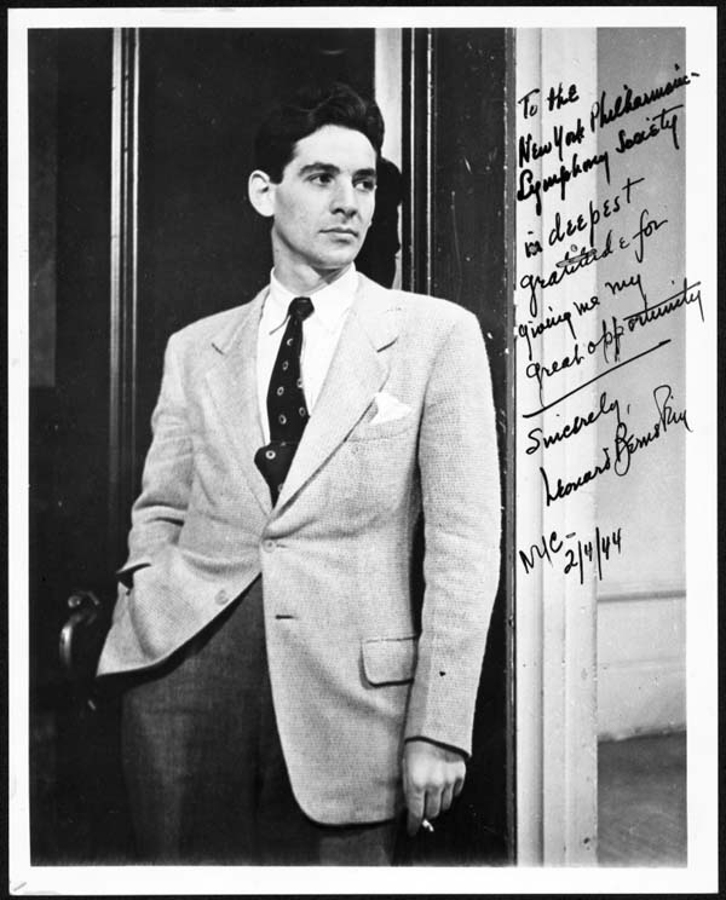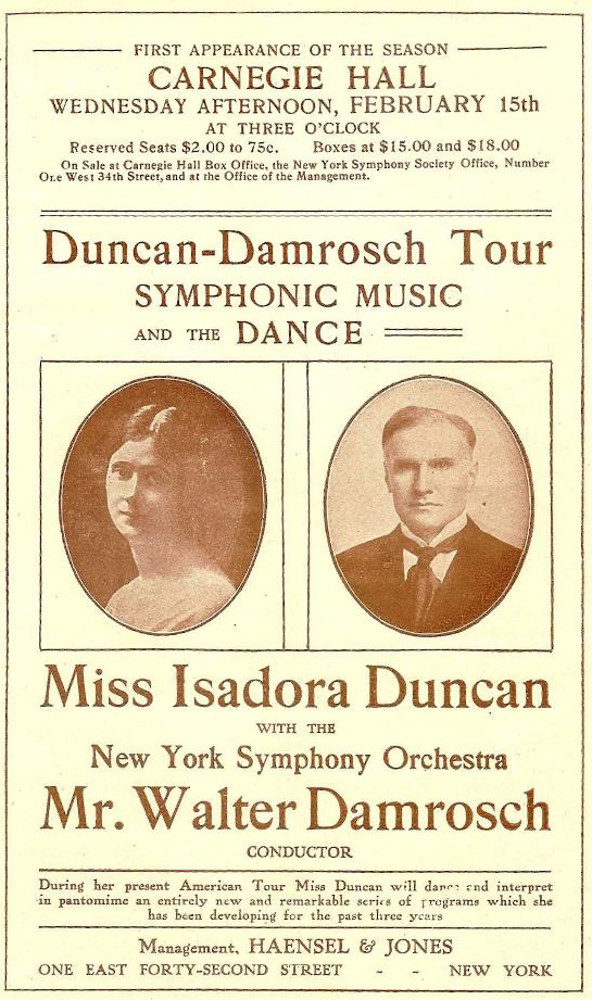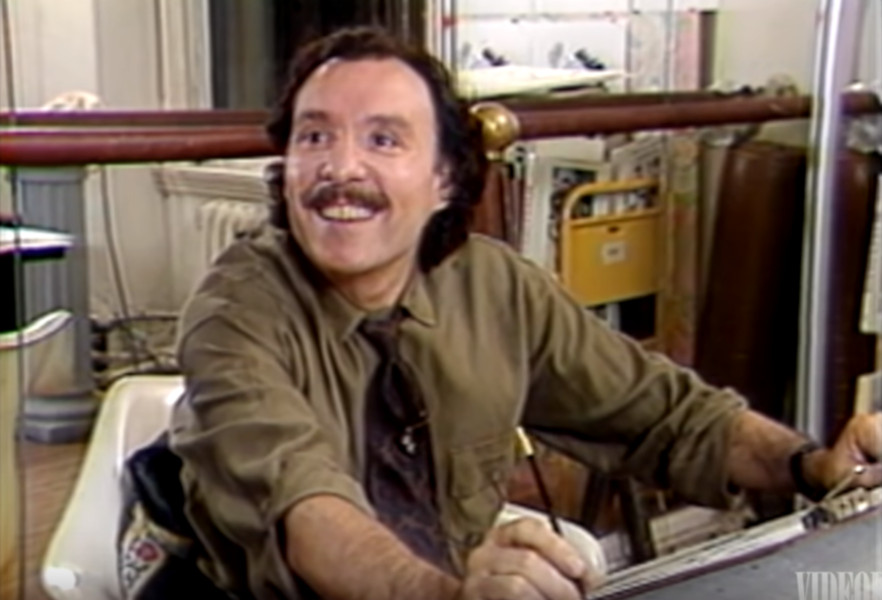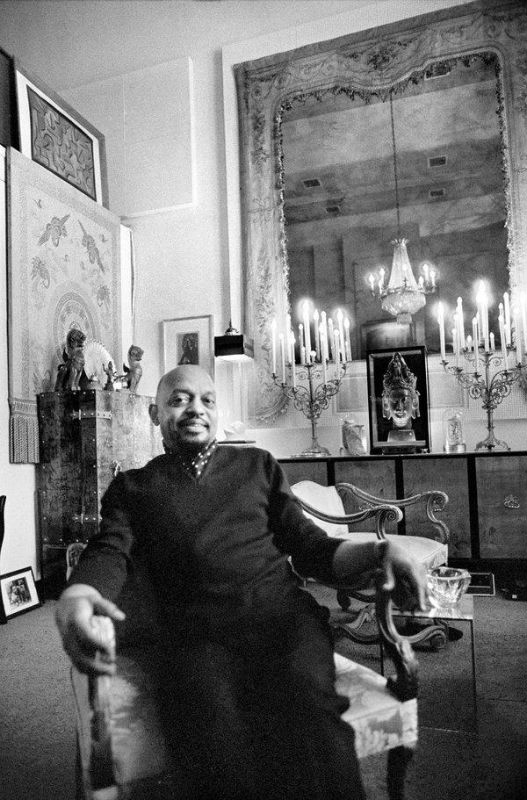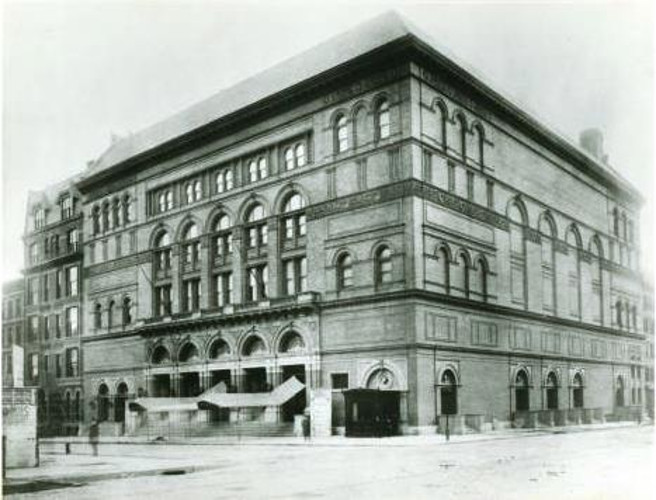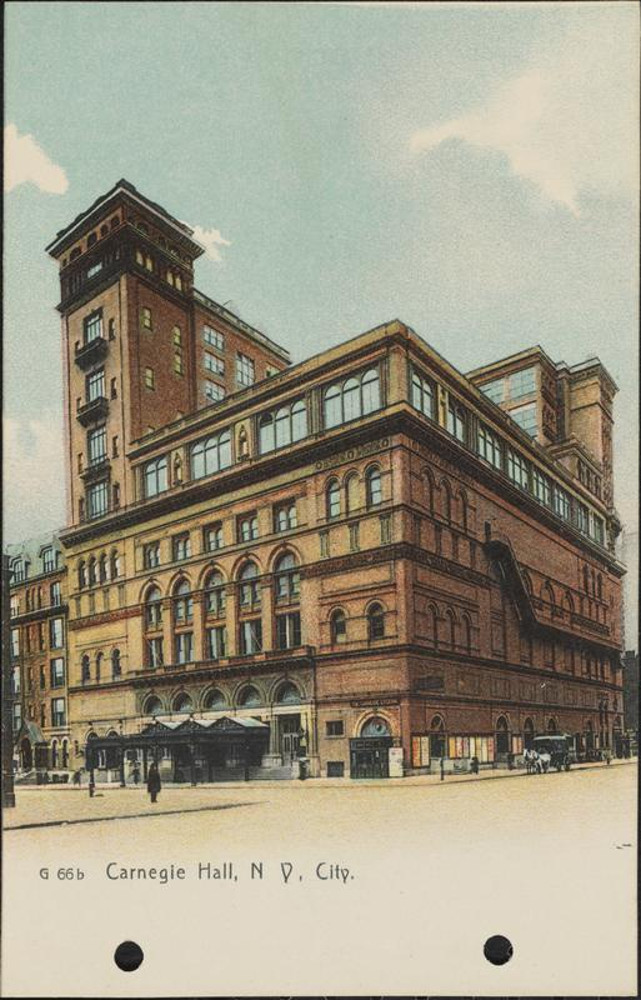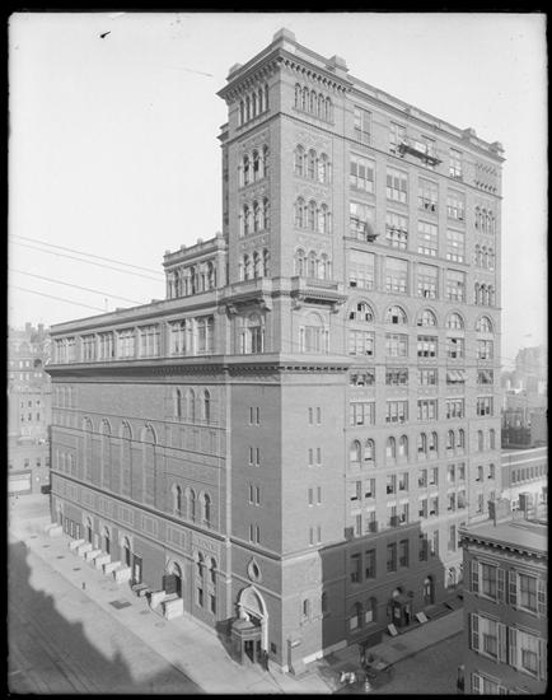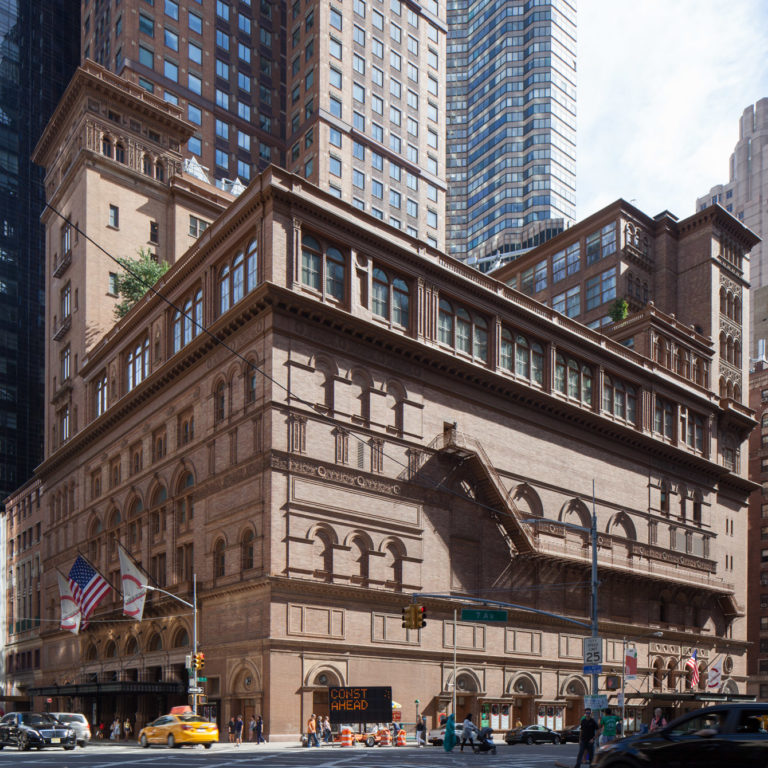
Carnegie Hall: Studio Towers
overview
The Studio Towers apartments were constructed atop Carnegie Hall from 1894 to 1897, a few years after the famed performance venue opened in 1891.
Until the last residents were evicted in 2010, Studio Towers was the residence of several LGBT artists over the years, including photographer Bill Cunningham, dancer Isadora Duncan, composer Don Shirley, and fashion illustrator Antonio Lopez, among others.
History
Studio Towers, residences formerly located above Carnegie Hall, was home to several notable artists from 1897 until 2010, when the last residents were evicted to make way for a plan to renovate the space for rehearsal and classroom use (evictions began in 2007). LGBT residents over the years included:
Leonard Bernstein (1918-1990) was a prominent composer and conductor for live performance and film who lived in a ninth-floor apartment at Studio Towers before moving to the Osborne Apartments and, finally, the Dakota. His work included writing the scores for On the Town (1944), On the Waterfront (1954), and West Side Story (1957). Few artists had as close an association with the Hall as Bernstein, who appeared more than 430 times between 1943 and 1990, as a conductor, pianist, composer, and educator.
Marlon Brando (1924-2004) was a prominent actor who lived in an eighth-floor apartment at Studio Towers early in his career. While Brando had relationships with women, he was open about the fact that he also had sexual relationships with men:
Homosexuality is so much in fashion, it no longer makes news. Like a large number of men, I, too, have had homosexual experiences, and I am not ashamed. I have never paid much attention to what people think about me.
Brando frequented Stewart’s Cafeteria in Greenwich Village early in his career, around the time he was roommates with James Baldwin, in a nearby apartment. At his death, Brando was hailed as one of the greatest American actors of the 20th century.
Bill Cunningham (1929-2016), who began his career as a milliner, was a fashion photographer for The New York Times from 1978 until his death. He became a particularly recognizable figure on the streets of New York City, traveling from place to place on his bicycle taking photos of fashionable everyday people.
To have your outfit snapped by New York Times photographer Bill Cunningham in Union Square or traipsing down Park Avenue was a particular rite of passage — the New York fashion kingdom equivalent of getting knighted.
In 2010, Cunningham was the subject of the documentary film Bill Cunningham New York, which shows him in his small, cramped apartment at Studio Towers filled with boxes of his photographs. In May of that year, he was evicted. Two years later, Cunningham received the Carnegie Hall Medal of Excellence.
Isadora Duncan (1877-1927), known as the “Mother of Modern Dance,” was a pioneering figure in American dance and an internationally celebrated dancer. As someone who today may have identified as bisexual, she is the earliest known LGBT resident of Studio Towers, and she also performed at Carnegie Hall. According to the Isadora Duncan Dance Foundation, “her style of dancing eschewed the rigidity of ballet and she championed the notion of free-spiritedness coupled with the high ideals of ancient Greece: beauty, philosophy, and humanity.”
Antonio Lopez (1943-1987) was a Puerto Rican-born fashion illustrator who grew up in Spanish Harlem and later attended Manhattan’s High School of Art and Design and the Fashion Institute of Technology (FIT). While at FIT, Lopez met artist Juan Ramos, his partner and art director for the next 25 years. In 1962, he began a full-time stint at Women’s Wear Daily, becoming one of the youngest illustrators to work there. By 1968, he and Ramos shared an apartment at Studio Towers; they moved abroad in 1970. According to friend, Joan Juliet Buck, Lopez and photographer David Montgomery gave Bill Cunningham, a Studio Towers neighbor, his first camera. Lopez also influenced the work of fashion designers, including Karl Lagerfeld, Rosita Missoni, and Yves Saint-Laurent.
His drawings … were so innovative that they forced the designers whose clothes he was drawing to actually think differently about them; many, in fact, ended up using elements of Lopez’s drawings in their collections the following season.
Lopez’s editorial illustrations appeared regularly in Vogue, Elle, and The New York Times, which featured his advertisement illustrations for Bloomingdale’s and Bergdorf Goodman. The Council of Fashion Designers in America named him American Fashion Illustrator of the Year in 1983. Four years later, at the age of 44, Lopez died of AIDS-related causes.
Don Shirley (1927-2013) was a Black composer and pianist born to Jamaican-immigrant parents. From 1956 until his eviction in June 2010, Shirley lived in an eighth-floor apartment at Studio Towers before moving to No. 130 on the thirteenth floor, which had 34-foot-high ceilings. Shirley is noted as the only studio tenant, besides Leonard Bernstein, to perform solo concerts at Carnegie Hall. In 1955, Shirley played with the NBC Symphony at the premiere of Duke Ellington’s Piano Concerto, which took place at the Hall. Shirley later undertook a number of U.S. concert tours in the 1960s, which was the subject of the controversial Academy Award-winning film Green Book (2018). Upon leaving his apartment after being evicted, his grand piano was removed by crane.
Entry by Amanda Davis, project manager (May 2019).
NOTE: Names above in bold indicate LGBT people.
Building Information
- Architect or Builder: Henry J. Hardenburgh
- Year Built: 1894-97
Sources
About the Artists,” Carnegie Artist Studios (accessed April 19, 2019), bit.ly/2UL8W1n.
Alexander Cavaluzzo, “Bill Cunningham’s Posthumous Memoir Isn’t Quite What You’d Expect,” Hyperallergic, January 11, 2019, bit.ly/2UQN9pm. [source of Cavaluzzo pull quote]
Gary Carey, Marlon Brando: The Only Contender (New York: St. Martin’s Press, 1985). [source of Brando pull quote]
Isadora Duncan,” The Isadora Duncan Dance Company, bit.ly/2VRdC5F. [source of Duncan quote]
Joan Juliet Buck, “Instamatic Memories From the Artist Who Captured the Disco Years,” The Cut, February 8, 2018, bit.ly/2FiUVfR.
Judy Francis, “Antonio Lopez,” Society of Illustrators, bit.ly/2vIiTOi.
Karin Nelson, “Shooting Star,” W, September 1, 2012, bit.ly/2H4p4By. [source of Nelson pull quote]
Liz Robbins, “In Apartments Above Carnegie Hall, a Coda for Longtime Residents,” The New York Times, August 27, 2010, A14.
Wendy Goodman, “Bohemia in Midtown,” New York, December 27, 2007, nym.ag/2vg8XLF.
Do you have more information about this site?
This project is enriched by your participation! Do you have your own images of this site? Or a story to share? Would you like to suggest a different historic site?
